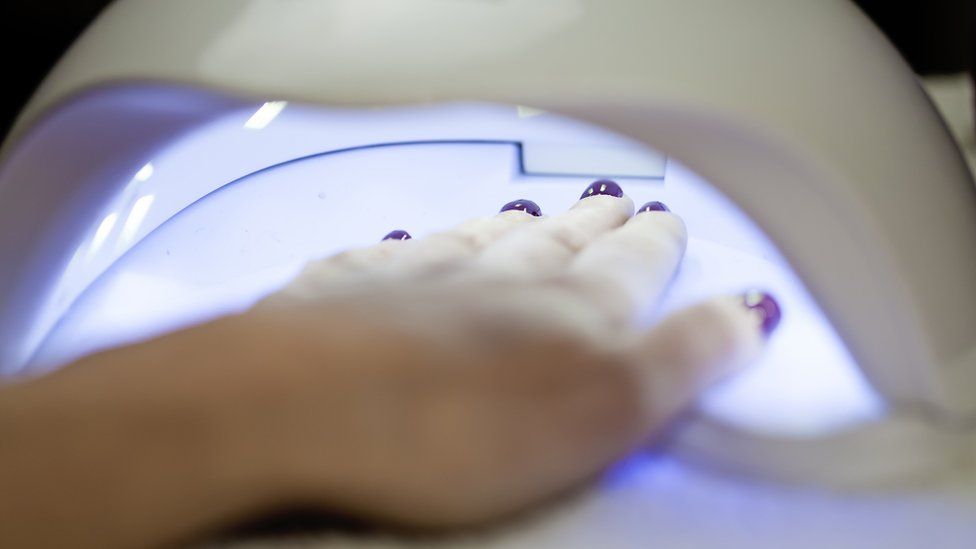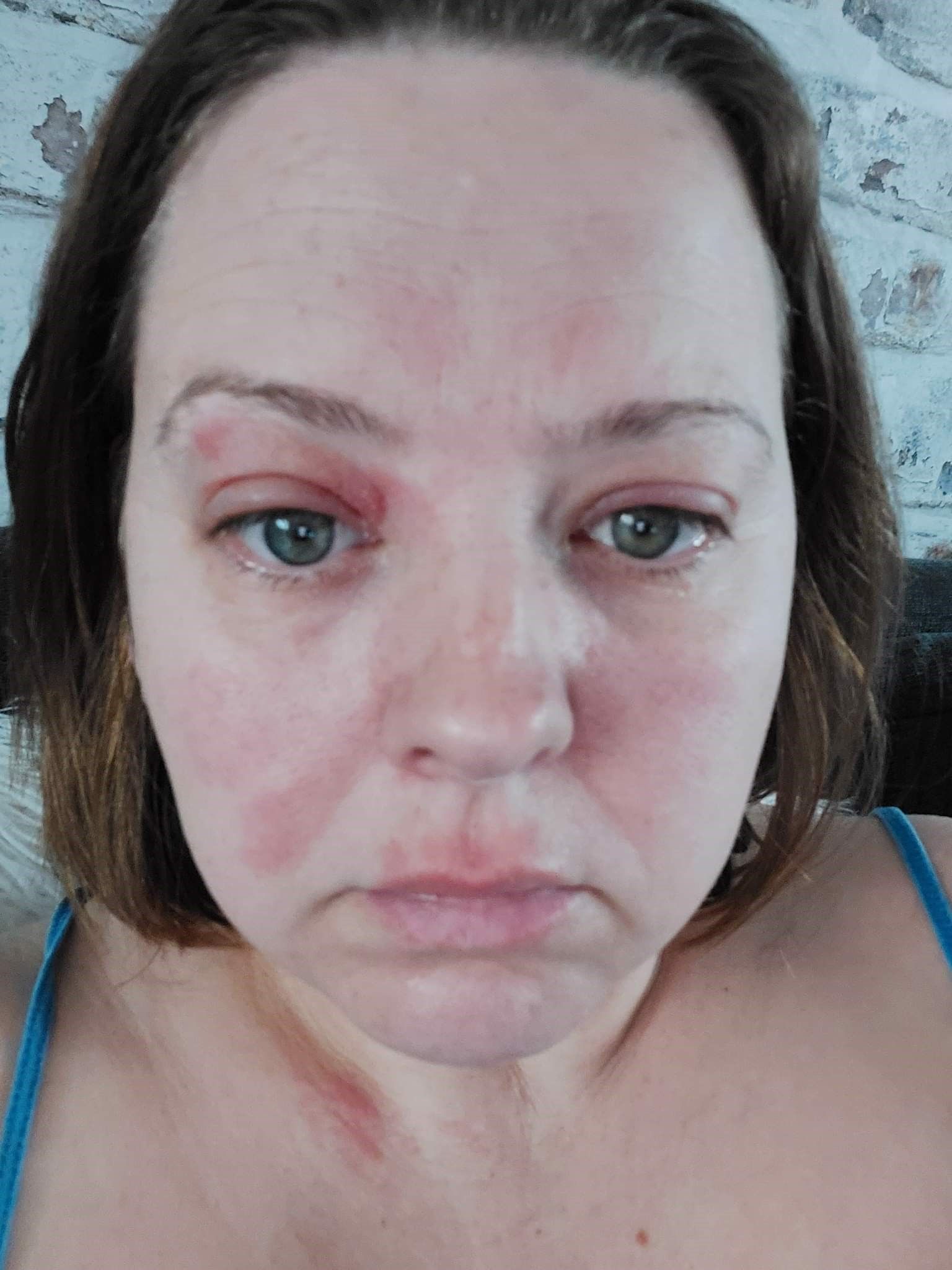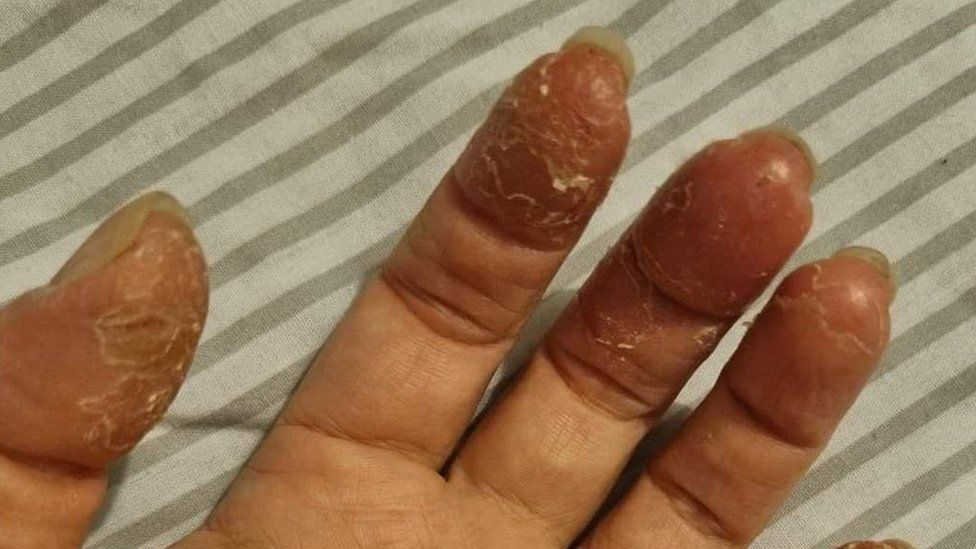The government is investigating reports that growing numbers of people are developing life-changing allergies to some gel nail products.
Dermatologists say they are treating people for allergic reactions to acrylic and gel nails “most weeks”.
Dr Deirdre Buckley of the British Association of Dermatologists urged people to cut down on gel nail use and stick to “old-fashioned” polishes.
She is now urging people to stop using DIY home kits to treat their nails.
Some people have reported nails loosening or falling off, skin rashes or, in rarer cases, breathing difficulties, she said.
On Friday, the government’s Office for Product Safety and Standards confirmed it was investigating and said the first point of contact for anyone developing an allergy after using a polish is their local trading standards department.
In a statement it said: “All cosmetics made available in the UK must comply with strict safety laws. This includes a list of ingredients to enable consumers with allergies to identify products that may be unsuitable for them.”
Although most gel polish manicures are safe and result in no problems, the British Association of Dermatologists is warning that the methacrylate chemicals – found in gel and acrylic nails – can cause allergic reactions in some people.
It often occurs when gels and polishes are applied at home, or by untrained technicians.
Dr Buckley – who co-authored a report about the issue in 2018 – told the BBC it was growing into “a very serious and common problem”.
“We’re seeing it more and more because more people are buying DIY kits, developing an allergy and then going to a salon, and the allergy gets worse.”
She said in “an ideal situation”, people would stop using gel nail polish and go back to old fashioned nail polishes, “which are much less sensitising”.
“If people are determined to continue with acrylate nail products, they should get them done professionally,” she added.
Gel polish treatments have spiked in popularity over recent years because the polish is long-lasting. But unlike other nail polishes, gel varnish needs to be “cured” under a UV light to dry.
However, the UV lamps that are purchased to dry the polish do not work with every type of gel.
If a lamp is not at least 36 watts or the correct wavelength, the acrylates – a group of chemicals used to bond the gel – do not dry properly, penetrating the nail bed and surrounding skin, causing irritation and allergies.

The allergies can leave sufferers unable to have medical treatments like white dental fillings, joint replacement surgery and some diabetes medications.
This is because once a person is sensitised, the body will no longer tolerate anything containing acrylates.
Dr Buckley said she saw one case where a woman had blistering over her hands and had to have several weeks off work.
“Another lady was doing home kits that she purchased herself. People don’t realize they’re going to become sensitized to something which has huge implications that have nothing to do with nails,” she added.
Lisa Prince started having problems when she was training to be a nail technician. She developed rashes and swelling all over her face, neck and body.
“We were taught nothing about chemical composition of the products we were using. My tutor just told me to wear gloves.”
After tests, she was told she was allergic to acrylates. “They told me I was allergic to acrylates and would have to let my dentist know because it would affect that,” she said. “And I would no longer be able to have joint replacements.”
She said she was left in shock, saying: “It’s a scary thought. I’ve got really bad legs and hips. I know that some point I’m going to need surgery.”

There are many other stories like Lisa’s on social media. Nail technician Suzanne Clayton set up a group on Facebook when some of her clients started reacting to their gel manicures.
“I started the group so that nail techs had a place to talk about the problems we were seeing. Three days later, there was 700 people in the group. And I was like, what’s going on? It was just crazy. And it’s just exploded since then. It just keeps growing and growing and growing”.
Four years on, the group now has in excess of 37,000 members, with reports of allergies from more than 100 countries.
The first gel nail products were created in 2009 by the American firm Gelish. Their CEO Danny Hill says this surge in allergies is concerning.
“We try so hard to do all the things right – training, labelling, certification of the chemicals that we use. Our products are EU compliant, and also US compliant. With internet sales, products are from countries that do not comply to those strict regulations, and can cause severe irritation to the skin.”
“We’ve sold close to 100-million bottles of gel polish around the world. And yes, there are cases when we do have some breakouts or allergies. But the numbers are very low.”

Some nail technicians have also said the reactions are giving some in the industry cause for concern.
Formulations of gel polishes do differ; some are more problematic than others. The founder of the Federation of Nail Professionals, Marian Newman, says gel manicures are safe, if you ask the right questions.
She has seen “lots” of allergic reactions affecting customers and nail technicians, she said. She is also urging people to ditch their DIY kits.
She told BBC News: “People that buy DIY kits and do gel polish nails at home, please don’t. What should be on the labels is that these products should be used by a professional only.
“Choose your nail professional wisely by their level of education, training and qualifications. Don’t be shy to ask. They won’t mind. And make sure they’re using a range of products that have been made in the in Europe or in America. As long as you understand what to look for, it is safe.”
She added: “One of the most recognized allergens is an ingredient names Hema. To be safer find someone who uses a brand which is Hema-free, and there are plenty of them now. And, if possible, hypoallergenic.”
Source : BBC












